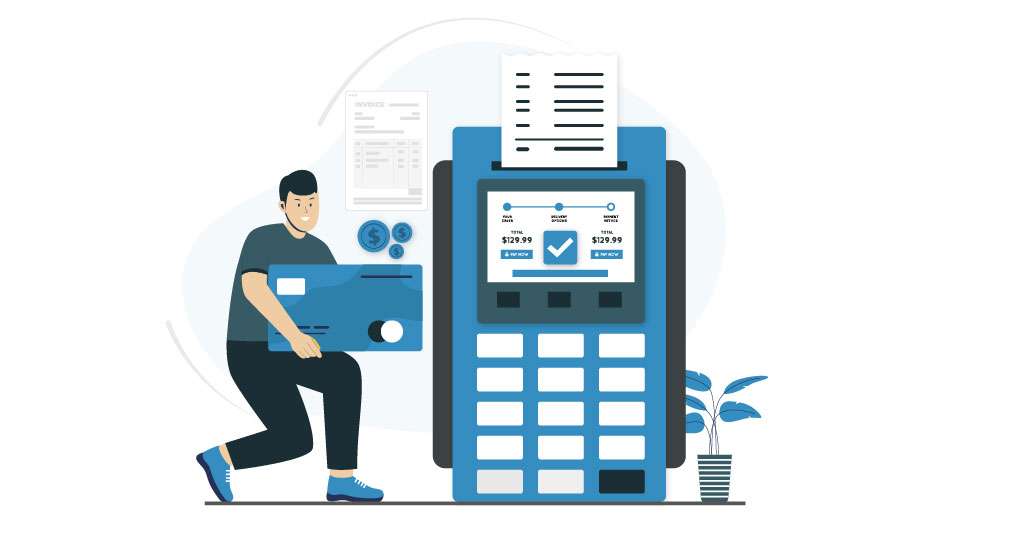Did you know that 26% of businesses are working to have a fully automated invoice processing system by 2024 end? Your accounts payable team has a lot on their plate. From handling supplier invoices to getting approvals and eventually clearing payments, your accounting function can get complicated over time and invoice payment process can get delayed impacting vendor relationships.
Managing cash flow with manual methods can be a huge menace for companies. Let’s see how both processes follow and why automated invoice payment processes can reap multiple benefits for AP teams.
What Does Invoice Processing Involve?

Invoice processing is usually carried out manually or with invoicing solutions. Suppliers can send invoices in various forms including paper invoices, emails, and PDFs. The entire process of receiving an invoice to sending a receipt of fulfilling the payments and recording the same in books is known as invoice processing.
Optimizing your invoice payment processes can not only bring in internal benefits but also ensure that your entire supply chain remains streamlined. If invoices are processed timely, you will have sufficient cash flow to pay your suppliers on time. Shifting to automated processes or bringing changes to your manual processes can reduce the chances of errors and enable improved control of working capital.
Why is Automated Invoice Processing Necessary?

A company can take up to 25 days to process a single invoice if it is dependent on manual methods. Moreover, the time will only add up when the number of invoices increases. Thus, leading to loss of time, money, and resources.
Wait, there is more to it! The threat of fraud, misappropriation of funds, and payment scams loom over businesses small or large. Both factors add to delayed invoice processes, and strainer supplier relationships, eventually affecting the growth of the enterprise. That’s why replacing manual workflows with automated invoice payment processes is a must. Accurate, efficient, and error-free finances await you.
How Does An Automated Invoice Payment Process Work?

Traditionally, invoice processing is initiated when the accounts department receives an invoice from a supplier instead of the services provided. Post that your team will match the invoice with internal records.
If the records are matched payment details are updated, sent for approvals, and if all things align payment is made to the supplier. However, in case there are discrepancies, it is sent back for corrections. The levels of approval will depend on the organizational structure.
On the other hand, automated invoice processing is built on the same workflow but it eliminates all manual tasks leading to zero delays and errors. Let’s see what automated invoice processing looks like:
- When the invoice is received, it is scanned and details are fed into the system with in-line data capture as per the desired format.
- Once the data is recorded, the invoice is converted into a text-searchable document. Post that is mapped by an automated management system and can be easily tracked within the ERP system.
- The stored data includes the purchase amount, supplier name, and the details of the services/goods provided. Moreover, a detailed and well-formatted account of the invoice is captured so that it can be shared with the concerned parties for review and approval.
- In case it doesn’t pass the validation checks, it is held for a manual review. If there are no errors, the processed invoice is assigned to accounting authorities for approval and payments.
Benefits of Using Automated Invoice Payment Processes

The transition from manual entry to automated processing can help you reap rich dividends. Here is how you can benefit from automated invoicing processes.
1. Single Point of Contact
The very essence of account payable automation is to streamline invoice processing and let you access all features in a few clicks. An automated accounting solution would help you access features like:
- Recurring billing
- Single time invoicing
- Manage subscriptions
- Payment updates in real-time
- Self-service for suppliers
Having these aspects in check will help you keep your finances in check and focus solely on business growth.
2. Reduced Manual Entries
51% of accountants agree that manual data entry eats up their precious time. With no way to make it accurate and efficient, they end up losing productive hours. Fortunately, automated data entry lets you reduce the time by 10x as compared to manual processes.
3. Improved Security and Less Errors
Manual invoice payment processes are prone to errors and mistakes. 23% of companies affirmed that data discrepancies are the major challenges in invoice processing. Moreover, 16% of companies revealed that data fraud and lack of supervision lead to delayed payments.
Luckily, automated invoice processing ensures that data is accurate and free of errors. Accounting solutions match the extracted data from invoices with company records to minimize fraud. Thus, making processes efficient and saving valuable time employees spent in matching entries.
4. Traceable and Transparent Records
Once payments are settled, invoices are stored in folders that are not traceable. Thus, it becomes hard to retrieve them when necessary. However, with automated invoice processing solutions, you can easily store data in a centralized manner without compromising on storage. Moreover, you will create an audit trail that will help you during tax calculations.
5. Monitoring & Customization
Manual invoice records cannot be monitored with precision. However, automated invoice payment processes guarantee transparency and let you store data in a retrievable database.
Besides, your accounting processes are integrated seamlessly which leads to zero conflicts between teams.
Expenses can be monitored in real-time and discrepancies can be reported with ease. You also get access to increased customization capabilities that let you fulfill business requirements and arrange the workflows.
Moreover, you can add custom logos, stamps, texts, and other relevant details to save on time and resources. Having such a solution in place ensures improved compliance with customs regulations. Thus, assuring you of the fact that company standards are always adhered to.
6. Improved Productivity and Vendor Relations
Automated workflows make it easier for employees to achieve deadlines and use their skill sets easily. Also, if your suppliers are happy with you, they are more likely to offer payment discounts. For the same, it is a must that payments are not delayed.
Automated invoice processing ensures that suppliers get real-time updates about their payments. This, in turn, ensures that there are no disputes between your company and suppliers. As a result, you can look forward to long-term relationships and smoother work dealings, which are highly compliant with periodic vendor audits.
7. Automated Invoice Routing
Manual routing is one of the biggest frustrations in the traditional invoice payment processes. Once the invoice is processed it is sent by mail to concerned parties for approval or discussed internally. These haphazard processes lead to delays and even lost invoices in certain cases.
Automated invoice solutions let you set workflows in such a manner that ensures that invoice reaches the right approvers. Moreover, users are notified and reminded of pending approvals. Thus, ensuring timely payments at all times.
Why Use Serina to Automate Your Invoice Payment Process?

94% of spreadsheets contain errors. At Serina, we ensure that you are not losing out on money due to incorrect entries by helping you automate the entire process.
To help you bring order to your accounting processes, we have designed Serina. It will help you:
- Access invoices and track payment details at any stage
- Get assistance with all kinds of invoices and receipts
- Automate AP (accounts payable) and keep your vendors happy
- Reduce data validation efforts by 83% automated line-item data capture
The benefits don’t end here! You get access to superlative risk management, expense analytics, API, and BPM tools in just a few clicks. An experience of a lifetime and much more awaits you!
FAQs
1. What is invoice payment process?
Invoice payment process involves receiving invoices, approving/rejecting them, and recording transactions for future purposes.
2. What are the methods used for invoice processing?
Invoice processing can be done via manual and AP automation methods. Invoices are first approved by the router and then exported to an accounting system. Post that payment is processed via electronic means or other different means.
3. What is invoice processing software?
Invoice processing software is a solution used by AP teams to handle vendor invoices and from the time it is received to settling them.
4. Why automate invoice processing?
Automated invoice processing can help you cut down on errors, reduce manual entries, expedite approval processes, save on labor costs, and clear payments faster.
5. What are the different types of invoices?
Here are some invoices sent by suppliers to get their dues cleared:
- Proforma invoice
- Overdue invoice
- Net due invoice
- Retainer invoice
- Timesheet invoice
- Final invoice
- Interim invoice
- Consolidated invoice





